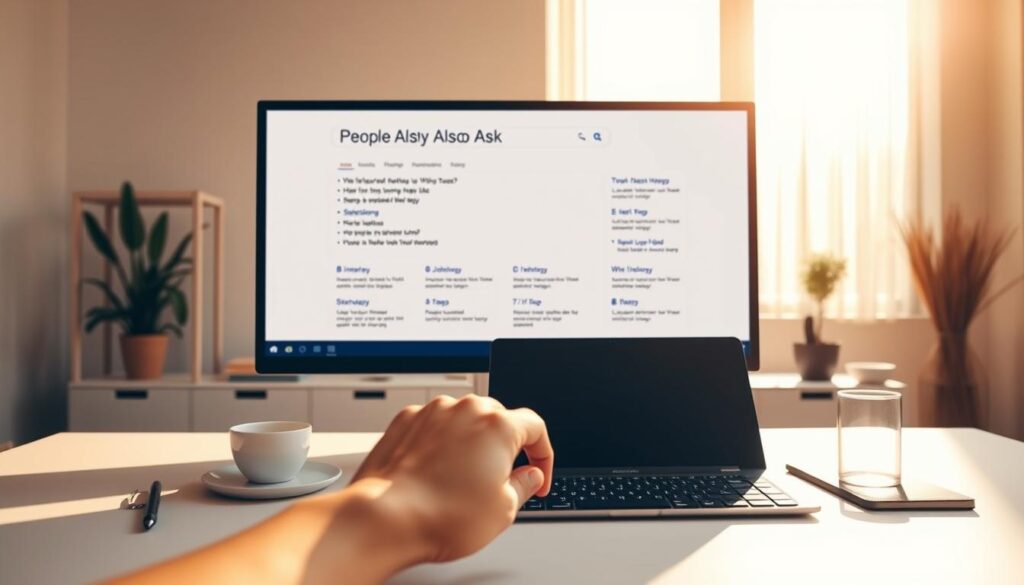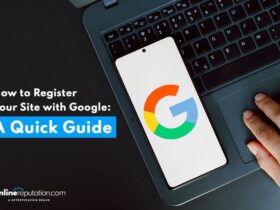In the competitive landscape of search engine results, securing prime positions is crucial for visibility and traffic. Two significant opportunities for businesses are People Also Ask (PAA) boxes and featured snippets. These features not only enhance your brand’s visibility but also provide direct answers to user queries, making them indispensable in modern SEO strategies.
At Reputation Return, we specialize in helping businesses optimize their presence in both PAA and featured snippets. Our expertise lies in understanding the nuances of these features and implementing strategies that drive real results. By focusing on strategic on-page modifications and leveraging innovative frameworks, we enable businesses to capture these valuable opportunities effectively.
Featured snippets, often referred to as “position zero,” can significantly boost your traffic and click-through rates. Research shows that pages with featured snippets can gain up to 31% more traffic compared to those without. Similarly, PAA boxes appear on approximately 65% of SERPs, providing an additional chance to engage users and improve your online presence.
Our approach combines data-driven insights with proven SEO techniques to help you dominate both PAA and featured snippets. Whether it’s through strategic content modifications or leveraging the latest tools, we ensure your business maximizes its online visibility and reach.
Key Takeaways
- Featured snippets can increase your website traffic by up to 31%.
- PAA boxes appear on about 65% of search engine results pages.
- Optimizing for both PAA and featured snippets requires strategic content modifications.
- Reputation Return offers tools to effectively modify PAA outcomes.
- Combining data insights with SEO techniques enhances your online visibility.
Introduction to Featured Snippets and People Also Ask
Featured snippets are concise, informative boxes that appear at the top of Google’s search results. They provide direct answers to user queries, making them highly valued by SEO professionals. These snippets are often referred to as “position zero” because they sit above the traditional first organic search result, significantly enhancing visibility and click-through rates.
People Also Ask (PAA) boxes, on the other hand, are expandable questions that appear below featured snippets. These questions are generated based on common user queries related to the search topic. PAA boxes offer additional opportunities for businesses to improve their search visibility, as they appear on approximately 65% of search engine results pages.
Google extracts content for featured snippets and PAA boxes from websites, formatting it into paragraphs, lists, or tables. To increase your chances of appearing in these features, ensure your content is clear, well-structured, and addresses user intent effectively. By doing so, you can capture these valuable opportunities and enhance your online presence.
Understanding the Role of Reputation Return
Reputation Return is a leading expert in shaping and enhancing your online presence through strategic SEO solutions. Our primary focus is on helping businesses achieve prominent positions in People Also Ask (PAA) boxes and featured snippets, which are crucial for visibility and traffic.
Enhancing Your PAA Results with Reputation Return
At Reputation Return, we specialize in modifying and optimizing PAA results to ensure your content is trusted and visible. By leveraging our expertise, businesses can present their information in a way that aligns with user intent, improving their chances of appearing in these valuable features.
Our approach involves:
- Strategic content modifications to enhance snippet quality
- Implementing proven SEO techniques for better rankings
- Providing tools to monitor and improve your online presence
| Feature | Before Reputation Return | After Reputation Return |
|---|---|---|
| Search Visibility | Low | High |
| Click-Through Rates | Average | Improved |
| Content Trust | Unestablished | Trusted |
Our solutions are designed to boost your online reputation and drive real results. Contact us today for a free, confidential consultation to discuss how we can help you achieve your digital goals.

Steps for Crafting Snippet-Ready Content
Creating content that earns a featured snippet requires a strategic approach. By structuring your content effectively, you can increase your chances of appearing in these coveted positions. Below, we outline the key steps to craft snippet-ready content.
Creating “What is” Headings for Immediate Answers
Start by incorporating “What is [keyword]” headings near the top of your content. This approach directly addresses common user queries and aligns with voice search patterns. For example, a heading like “What is a Featured Snippet?” immediately signals to search engines that your content provides a clear definition.
Implementing “Is” Statements for Clarity
Begin your definitions with an “is” statement to enhance clarity. For instance, “A featured snippet is a concise answer…” This structure not only aids readability but also aligns with how search engines parse information for snippets. Examples from Investopedia and technology advice pages demonstrate how this structure successfully captures snippet opportunities.
Keep your definitions concise, ideally two to three sentences, and revise iteratively based on search engine feedback. This process ensures your content remains competitive and snippet-ready.
optimizing featured snippets: Best Practices
Securing a featured snippet position is a powerful way to dominate search results and capture user attention. To achieve this, your content must align with Google’s preferences for clarity, conciseness, and format.
Concise Definitions and Matching SERP Formats
Start by crafting definitions that fit within 40-60 words. This length aligns with Google’s preference for brevity. Next, match the format you see in search results—whether it’s a paragraph, list, or table. For example, if a keyword triggers a list snippet, structure your content with bullet points.
Avoid using brand names and first-person language. This neutrality makes your content more suitable for voice search and universal readability. For instance, Investopedia excels at this by providing clear, impartial definitions that Google often features.
| Element | Before | After |
|---|---|---|
| Content Clarity | Unclear | Concise |
| Formatting | Unstructured | Aligned with SERP |
| Visibility | Low | High |
Use HTML elements like emphasis tags and strong tags to highlight key points. These signals help Google identify snippet-worthy content. For example, wrapping definitions in tags can enhance visibility.
Remember, securing a featured snippet often requires multiple iterations. Monitor your results, refine your approach, and adjust your content based on performance. With persistence, you can significantly improve your chances of appearing in these coveted spots.
For more insights on refining your strategy, visit our guide on reputation management best practices.
Leveraging Content Structure and On-Page SEO
Structuring your content effectively is key to capturing Google’s attention for both featured snippets and PAA boxes. By organizing your content with clear subheadings and HTML elements, you enhance readability and signal snippet-readiness to search engines.
Utilizing Subheadings and HTML Elements Effectively
Start by using H2 and H3 tags to break up your content logically. This structure helps Google understand your content hierarchy. For example, using an H2 tag for main topics and H3 tags for subtopics guides search engines to identify key sections easily. Additionally, incorporating strong tags and emphasis tags highlights important points, making your content more snippet-friendly.
Optimizing for Voice Search and Visual Appeal
Voice search optimization is crucial, as it often triggers featured snippets. Use natural, conversational language and structure your content to answer questions directly. Including images optimized for speed and clarity can also enhance visual appeal. Studies show that well-structured pages with clear formatting can increase user engagement by up to 30%.
Consistent design elements, like fonts and spacing, maintain a professional look. By combining these strategies, you create content that appeals to both desktop users and voice searchers, boosting your chances of securing a featured snippet position.
Integrating People Also Ask into Your Strategy
Mining People Also Ask (PAA) boxes offers a goldmine of keyword ideas and insights into user behavior. By analyzing these questions, you can uncover long-tail queries that are often less competitive and more specific to user needs.
Identifying Related Questions and Long Tail Queries
Start by examining PAA boxes for keywords related to your topic. Tools like Semrush and Moz can help you identify patterns and opportunities. For example, if a PAA box includes questions like “What is a featured snippet?” or “How do I improve my search rankings?”, you can create content sections addressing these topics directly.
Targeting long-tail queries provides several benefits. These niche queries often have lower competition and higher conversion rates. By addressing specific user questions, you can capture traffic that might otherwise be missed. Additionally, integrating these questions naturally into your content enhances readability and user engagement.

Scaling your content strategy with PAA data is straightforward. Use these insights to expand your content scope, ensuring each section answers a common user question. This approach not only improves your chances of appearing in PAA boxes but also enhances your overall SEO performance.
Iterative Testing and Performance Tracking
Continuous testing and performance tracking are essential for maintaining and improving your online presence in Google’s competitive landscape. By regularly monitoring your search engine rankings and user engagement, you can make data-driven decisions to refine your strategy and stay ahead of the competition.
Monitoring SERP Rankings and User Engagement
To effectively track your performance, utilize tools like Google Search Console and Ahrefs. These platforms provide insights into your SERP rankings, click-through rates, and user engagement metrics. For example, Google Search Console offers detailed reports on impressions, clicks, and average positions, helping you identify areas for improvement.
Monitoring user engagement metrics such as bounce rate, time on page, and scroll depth can also reveal how well your content resonates with your audience. These insights are crucial for refining your content strategy and improving your chances of securing a featured snippet.
Refining Your Approach Through Regular Updates
Regularly updating your content based on performance data is key to maintaining and improving your online visibility. Use tools like SEOTesting.com to automate tracking and refine your strategy. For instance, if your click-through rate (CTR) is low, consider revising your meta descriptions or titles to better align with user intent.
| Metric | Before Testing | After Testing |
|---|---|---|
| Average Position | 12 | 7 |
| Click-Through Rate (CTR) | 2% | 5% |
| Impressions | 500 | 1,200 |
Regular audits of your content and performance data ensure that your strategy remains effective. By iteratively testing and refining your approach, you can continuously improve your online presence and achieve your digital goals. For more insights on refining your strategy, visit our guide on reputation management best practices.
Conclusion
In conclusion, securing positions in both featured snippets and People Also Ask (PAA) boxes is a powerful way to enhance your online visibility and engage users effectively. By structuring your content with clear definitions, leveraging iterative testing, and aligning with user intent, you can significantly improve your chances of appearing in these prominent search features.
At Reputation Return, we specialize in helping businesses modify and optimize their PAA results, ensuring their content is trusted and visible. Our expertise in strategic content modifications and SEO techniques empowers businesses to capture these valuable opportunities and improve their online presence.
Don’t let your digital brand suffer from misinformation. Identify and address fake online reviews to protect your reputation. Contact us today for a free, confidential consultation to discuss how we can help you achieve your digital goals and safeguard your online reputation.
FAQ
What is the difference between featured snippets and People Also Ask (PAA)?
Featured snippets are concise answers appearing at the top of Google search results, directly addressing the query. People Also Ask (PAA) boxes display related questions users might have, offering additional context and opportunities for visibility.
How can I improve my chances of getting a featured snippet?
Focus on creating clear, concise content that directly answers user queries. Use structured formatting like headings, bullet points, and tables to make your content easily digestible for search engines and users alike.
What role does content structure play in optimizing for featured snippets?
Well-organized content with subheadings, lists, and clear definitions increases your chances of being featured. Ensure your content matches the format Google prefers for specific queries, such as tables for comparisons or bullet points for lists.
Can I influence the questions that appear in People Also Ask?
While you can’t directly control PAA questions, creating comprehensive content that covers related topics and long-tail keywords can increase your visibility in these boxes. Focus on anticipating user intent and addressing it thoroughly.
How does Reputation Return help with optimizing for featured snippets and PAA?
Reputation Return specializes in enhancing your online presence and reputation. By crafting optimized, snippet-ready content, we help you gain better visibility in search results, improving your chances of appearing in featured snippets and PAA boxes.
What tools can I use to monitor my featured snippet performance?
Tools like Google Search Console, Ahrefs, and SEMrush can help you track your rankings and identify opportunities for improvement. Regularly monitoring your performance allows you to refine your strategy and stay competitive.
How often should I update my content to maintain featured snippet visibility?
Regular updates are crucial. Refresh your content periodically to keep it relevant and aligned with current user intent. This demonstrates to search engines that your content is up-to-date and authoritative.
Can featured snippets negatively impact my website traffic?
While featured snippets can reduce clicks to your site in some cases, they also enhance your brand’s authority and visibility. The goal is to balance snippet presence with compelling content that encourages users to visit your page for more detailed information.
How does voice search impact featured snippet optimization?
Voice search often leads to more direct, question-based queries. Optimizing for these by using natural language and answering questions clearly can improve your chances of appearing in both voice search results and featured snippets.
What is the best way to measure the success of my snippet optimization efforts?
Track key metrics like search engine rankings, click-through rates, and user engagement. These indicators will help you assess the effectiveness of your strategy and identify areas for improvement.















